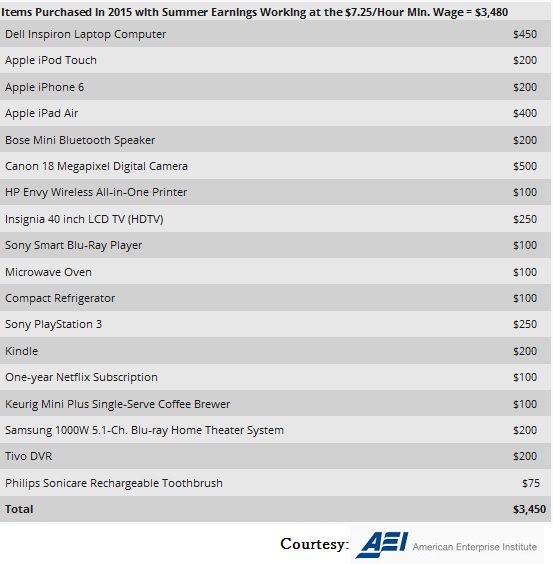Back to school time brings with it a little anxiety for budget conscious students and parents when looking at a list of expensive, high-tech school supplies, especially students who worked all summer long to save money for the upcoming year of college.
To avoid total sticker shock, it might be worthwhile to put the cost of these supplies into perspective and realize students today get far more for the money than 40 years ago.
College economics professor Mark Perry, who also works with The American Enterprise Institute (AEI), put together two charts that show what a college-bound teenager who worked a minimum wage job all summer could buy with those earnings in 1973 versus today.
He calculated that with the federal minimum wage at $1.60 per hour in 1973, a full-time summer job would give a college-bound teenager $768 for school supplies. (That is not counting taxes.) Perry used retail prices from a 1973 Sears Spring and Summer Catalog and found that the student would be able to buy just five items for school:

That’s not a whole lot in terms of college supplies. Let’s look at today. Perry figured a teenager working a full-time summer job at a federal minimum wage of $7.25 per hour would earn $3,480 over the summer. (Again, not counting taxes.) With that money, the student could go to the Best Buy website and purchase the following:
What’s more, as Perry points out, the $7.25 minimum wage is “actually 13% below the inflation-adjusted minimum wage of $8.60 an hour (in 2015 dollars) in 1973.” In other words, in 2015 dollars, the 1973 teenager would have earned a $8.60 minimum wage. So had inflation kept up, today’s teenager would have earned more than $4,100 working that summer job.
Also, government figures show, “85% of workers ages 16-19 years old earned more than the federal minimum wage last year of $7.25 per hour, so a large majority of teenagers working full-time over the summer would have actually earned more than the $3,480 amount” used in this chart.
The bottom line is that even with wages staying flat, new products keep finding their way on the market that are produced more efficiently and less expensively, which means an improved standard of living for everyone, including minimum wage workers.
To learn more facts about who earns the minimum wage, check out our infographic here.




